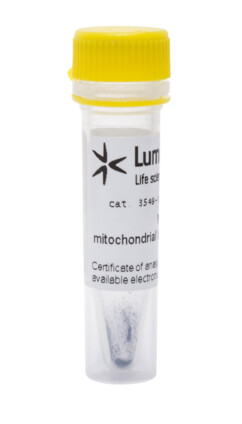SynaptoProbe® Green
| Cat. # | Quantity | Price | Lead time | Buy this product |
|---|---|---|---|---|
| 3762-100ug | 100 ug |
–
|
in stock | |
| 3762-1mg | 1 mg |
$112
|
in stock | |
| 3762-5mg | 5 mg |
$379
|
in stock |

SynaptoProbe® Green is an analog of FM®1-43, a widely used green fluorescent dye for studying synaptic activity in the synapses or neuromuscular junctions by staining synaptic vesicles.
This water-soluble and non-toxic to cells dye is nonfluorescent in an aqueous medium but becomes highly fluorescent after embedding into the outer leaflet of the cell membrane. When a neuron actively releases neurotransmitters, the dye becomes internalized within the recycled synaptic vesicles and stains the nerve terminals.
SynaptoProbe® Green can be used to visualize synaptic vesicles and their exocytosis and endocytosis in living neurons, identify actively firing neurons, and investigate the mechanisms of activity-dependent vesicle cycling. It is also helpful for the visualization of shear stress-induced plasma membrane damage in fibroblasts.
Absorption and emission spectra of SynaptoProbe Green

Customers also purchased with this product
General properties
| Appearance: | light red solid |
| Molecular weight: | 705.55 |
| CAS number: | 149838-22-2 (dibromide) |
| Molecular formula: | C30H49I2N3 |
| IUPAC name: | N-(3-Triethylammoniumpropyl)-4-(4-(Dibutylamino) Styryl) Pyridinium Diiodide |
| Solubility: | good in water |
| Quality control: | NMR 1H and HPLC-MS (95+%) |
| Storage conditions: | 24 months after receival at -20°C in the dark. Transportation: at room temperature for up to 3 weeks. Desiccate. |
| MSDS: | Download |
| Product specifications |
Spectral properties
| Excitation/absorption maximum, nm: | 492 |
| ε, L⋅mol−1⋅cm−1: | 55800 |
| Emission maximum, nm: | 594 |
























 $
$ 
